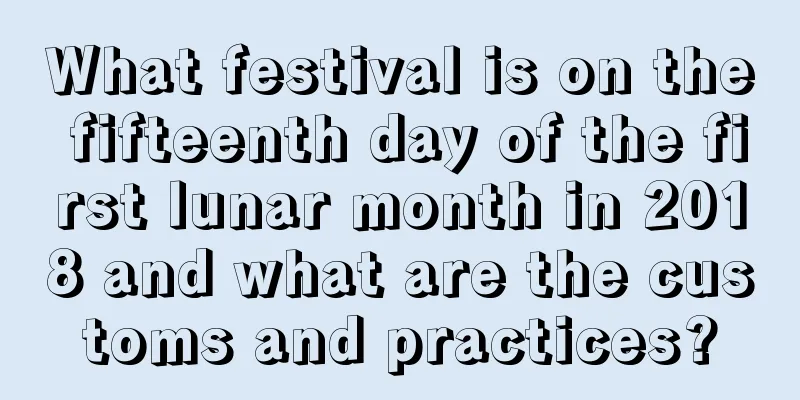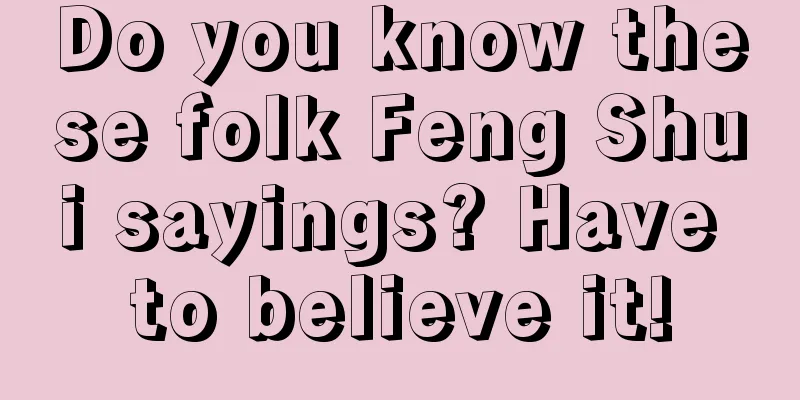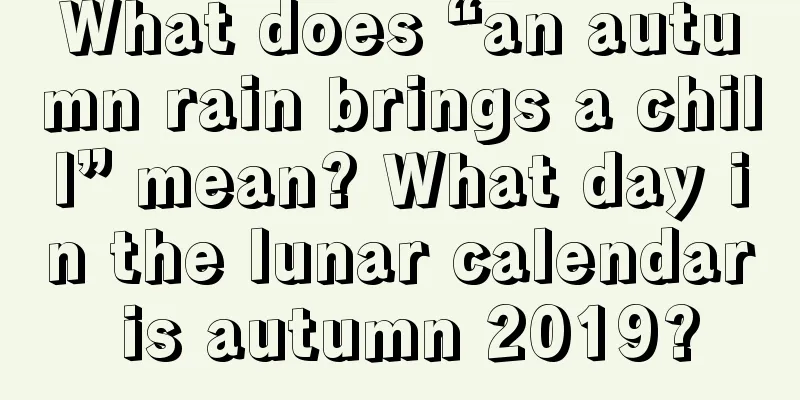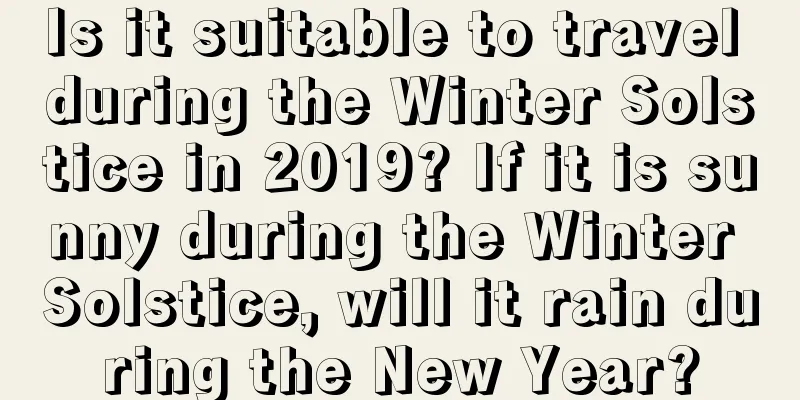What festival is on the fifteenth day of the first lunar month in 2018 and what are the customs and practices?

The Spring Festival is a festive holiday in the year. There are also many customs and habits during the Spring Festival. Although the customs and habits are not the same in all regions, there are definitely ways to celebrate. The fifteenth day of the first lunar month is also a festival celebrated by the whole country. What are the customs and habits on this day? For more details about the 2018 Lunar New Year calendar, please visit the Fortune Teller website for consultation!What festival is on the 15th day of the first lunar month in 2018?The fifteenth day of the first lunar month is the Lantern Festival, also known as the Shangyuan Festival, the Little New Year, the Yuanxiao Festival or the Lantern Festival. It is the first important festival after the Spring Festival and one of the traditional festivals of China, the regions in the Chinese character cultural circle and overseas Chinese. The first month of the lunar calendar is the first month of the year. The ancients called the night "xiao", so the fifteenth day of the first full moon night of the year is called the Lantern Festival. In ancient Chinese customs, the Shangyuan Festival (Tianguan Festival, Lantern Festival), the Zhongyuan Festival (Diguan Festival, Yulan Festival), and the Xiayuan Festival (Shuiguan Festival) are collectively known as the Three Yuans. The Lantern Festival began in the Qin Dynasty more than 2,000 years ago. Emperor Wen of the Han Dynasty issued an order to designate the fifteenth day of the first lunar month as the Lantern Festival. During the reign of Emperor Wu of Han, the worship activities for "Taiyi God" were set on the fifteenth day of the first lunar month (Taiyi: the god who dominates everything in the universe). When Sima Qian created the "Taichu Calendar", he had already designated the Lantern Festival as a major festival.What are the customs and habits of the Lantern Festival?Eating Yuanxiao <br /> Eating Yuanxiao on the 15th day of the first lunar month is a traditional food in China. In the Song Dynasty, a novel food for the Lantern Festival became popular among the people. This kind of food was first called "Fuyuanzi" and later called "Yuanxiao". Businessmen also called it "Yuanbao". Yuanxiao, also known as "tangyuan", is filled with sugar, rose, sesame, bean paste, osmanthus, walnut kernels, nuts, jujube paste, etc. It is wrapped in glutinous rice flour into a round shape. It can be meat or vegetarian, with different flavors. It can be cooked in soup, fried, or steamed, symbolizing reunion and happiness. The glutinous rice balls in Shaanxi are not wrapped but "rolled" in glutinous rice flour and then boiled or fried. They are hot and round.Lantern Festival <br /> The fifteenth day of the first lunar month is the Lantern Festival. During this festival, people have the custom of hanging, lighting and watching lanterns, so it is also called the Lantern Festival. [17] Playing with lanterns is a traditional festival custom of the Lantern Festival, which originated in the Western Han Dynasty and flourished in the Sui and Tang Dynasties. After the Sui and Tang Dynasties, the custom of lighting lanterns became popular and was passed down to later generations. The fifteenth day of the first lunar month is the climax of the annual lantern and fireworks festival. That's why the Lantern Festival is also called the "Festival of Lanterns". In Shanxi's county towns and even villages and towns, which are densely populated and prosperous areas, before the arrival of the fifteenth day of the first lunar month, the streets are hung with lanterns, flowers are in bloom and lights are swaying, reaching a climax on the night of the fifteenth day of the first lunar month. The "watching lanterns" on the 15th day of the first lunar month has become a traditional activity for the people of Shanxi Province. Guessing Lantern Riddles <br /> Guessing lantern riddles, also known as playing lantern riddles, is a traditional folk entertainment activity unique to China with a rich national style. It is a special activity of the Lantern Festival that has been passed down since ancient times. On the fifteenth day of the first lunar month, traditional people would hang up colorful lanterns and set off fireworks. Later, some people wrote riddles on pieces of paper and posted them on colorful lanterns for people to guess. Because riddles can enlighten the wisdom and cater to the festive atmosphere, many people responded to them, and guessing riddles gradually became an indispensable program of the Lantern Festival. Riddles add to the festive atmosphere and showcase the ancient working people’s wisdom and wisdom and their yearning for a better life. Dragon Lantern Dance <br /> Also known as Dragon Lantern Dance or Dragon Dance. Its origin can be traced back to ancient times. Legend has it that as early as the Yellow Emperor period, in a large-scale song and dance called "Qingjiao", there appeared an image of a human playing a dragon head with a bird body. Later, a dance scene of six dragons interweaving with each other was choreographed. The first recorded dragon dance was in the "Fu of Western Capital" by Zhang Heng of the Han Dynasty. The author gave a vivid description of the dragon dance in the narration of a hundred plays. According to the "Book of Sui·Music Records", during the reign of Emperor Yang of Sui, the "Yellow Dragon Change" performance, which was similar to the dragon dance in various acrobatics, was also very exciting and dragon dance became popular in many places in China. The Chinese nation worships the dragon and regards it as a symbol of good luck. Lion Dance <br /> Lion dance is an excellent folk art in China. During the Lantern Festival or gatherings and celebrations, people perform lion dance to liven up the atmosphere. This custom originated in the Three Kingdoms period, became popular during the Southern and Northern Dynasties, and has a history of more than a thousand years. [1] "Lion dance" originated in the Wei and Jin Dynasties and flourished in the Tang Dynasty. It is also known as "Lion Dance" and "Taiping Music". It is usually performed by three people. Two of them dress up as lions, one acts as the lion's head, one acts as the lion's body and hind legs, and the other acts as the lion's leader. There are two types of dance: civil and martial. The civil dance shows the lion's tameness, with movements such as shaking hair and rolling. The martial lion dance shows the lion's ferocity, with movements such as leaping, kicking high, and rolling colorful balls. Land Boat Rowing <br /> Land Boat Rowing, according to folklore, is to commemorate Dayu, who made great contributions to flood control. Land boat rowing is also called land boat running, which is to imitate the movement of a boat on land. Most of the people who perform land boat running are girls. The land boat is not a real boat. It is made of two thin boards, sawn into a boat shape, tied with bamboo and wood, and covered with colorful cloth. It is tied around the girl's waist. It is like sitting in a boat. She holds oars in her hands and makes rowing gestures while running, singing local tunes and dancing at the same time. This is land boat rowing. Sometimes there is another man dressed as a passenger on the boat, and his partner in the performance is mostly dressed as a clown, using all kinds of funny actions to amuse the audience. Land boat rowing is popular in many areas of China. |
<<: Is the thirteenth day of the first lunar month in 2018 a good day? Can I travel far away?
Recommend
Is the winter solstice on November 7, 2020 an auspicious day for raising the beam? Check the auspicious time for the winter solstice on December 21
Introduction: Generally, an auspicious day is requ...
What date is September 22nd in the lunar calendar 2018? What day is it?
Autumn is a season of harvest, with the fragrance...
Is the eighth day of the ninth lunar month in 2020 a good day to start renovations?
"Breaking ground" means digging and digg...
What are the tips for things to do in December? Which month in the lunar calendar is the twelfth lunar month?
What are the tips for things to do in December? Wh...
Where is the direction of the God of Happiness on the 17th day of the 11th lunar month in 2019?
Where is the direction of the God of Happiness on...
Introduction to the precautions for the Minor Cold solar term, do you know all of these?
There are certain precautions to take during the M...
Where is the position of the Four Cold Gods on the twelfth lunar month of 2018?
The God of Joy is one of the auspicious gods in my...
Do we need to do spring cleaning on the Little New Year? What is the meaning of sweeping the house on the Little New Year?
Little New Year is the beginning of the busy year,...
Is the 28th day of the eighth lunar month in 2020 an auspicious day?
Is the 28th day of the eighth lunar month in 2020 ...
Is Grain in Ear very hot in 2021? What is the origin of Grain in Ear?
The mantis breaks out of its shell, and the shrike...
Is Children’s Day on April 18th of the lunar calendar 2018 a good day to pick up a car?
Introduction: According to the tradition of our co...
What does “Summer Solstice Song” mean?
Chinese people are particularly fond of the number...
What do people born on the Ghost Festival say?
What do people born on the Ghost Festival say? The...
Is it possible to put up the beams on December 19th of the lunar calendar in 2018? How's your day?
The etiquette of house building is actually a kind...
Is it suitable to travel on the Army Day on the first day of the seventh lunar month in 2019? Is it a good day to travel?
Introduction: Generally, you have to choose an aus...









